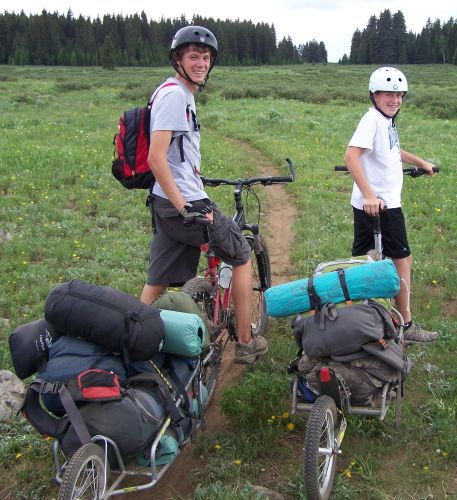By Charles Pekow
You needn’t look any further than Alpine, right here in Utah to prove the benefits of the endangered Safe Routes to School (SRS) program. SRS itself is traveling an unsafe route to survival, running on a spare tire presently in a seemingly endless series of leases on life while Congress continues to debate its future. But a national study cited Alpine’s use of an SRS grant as a reason to support bicycle and pedestrian infrastructure in small towns. It’s not just the major population centers that benefit from government efforts to improve bicycling conditions, the study argues.
(While Congress is debating various plans to consolidate, cut or end guarantees of federal funding for bicycle projects, the old surface transportation law remains in effect – until June 30 by the latest extension).
Meanwhile, back in Alpine, a relatively small SRS grant of $71,000 came from the federal government through the Utah Department of Transportation. It paid in part for a path and bike storage that increased the number of children in town who walk and bike to school. And the little city with fewer than 10,000 inhabitants didn’t skimp either: it matched the grant with $125,000 making the federal dollars go a much longer way.
This story is one of may cited by the Rails-to-Trails Conservancy (RTC) in its latest report, Active Transportation Beyond Urban Centers: Walking & Bicycling in Small Towns & Urban America to show that people outside major metropolises need and use bicycle infrastructure just as much as their urban and suburban counterparts.
The study opens by restating an assumption that it then goes on to refute: “Some commentators and decisionmakers have long assumed that biking and walking are strictly a ‘big city’ phenomenon, and that rural American can’t benefit substantially from bicycling and pedestrian infrastructure.”
Actually, the report says rural communities receive twice as many federal dollars per capita than urban ones from the Transportation Enhancements program, the largest source of support for bike trails.
But one size doesn’t fit all in rural America, as towns range from farm communities to resorts and factory or mining centers, all with different transit needs.
But building infrastructure in rural areas poses its own set of concerns, the report warns. Speed limits tend to be high on rural highways linking towns, making a collision with a car especially dangerous, as the faster the speed, the worse the injury and likelihood of fatality.
Full disclosure: I am an RTC member. Also, consider the source, as RTC exists to promote trail construction and use. RTC received funding for the study from Bikes Belong, a bike industry-funded campaign to promote bicycling; and SRAM, a bicycle manufacturer.
You can read the report online at http://www.railstotrails.org/resources/flipbooks/2012_bucreport/buc_report.html#/6/ .








